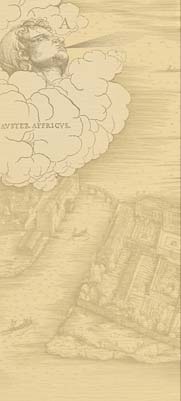Mathematics: The Abacus Tradition
The abacus tradition of medieval mathematics is usually traced back to Leonardo Pisano and the book he published in 1202, Liber abaci. Pisano, more widely known as Fibonacci, had lived in various Arab lands, and his book contained a summation of Arabic advances in mathematics, including the use of the decimal system and Arabic numerals (both borrowed from the Hindus), as well as algebra.
Pisano stressed the practicality of Arabic numbers and methods, and Italian merchants quickly grasped their usefulness. Now they could write any number using only 10 symbols (the digits 0 through 9) and carry out complicated calculations using simple diagrams. The cumbersome system of Roman numerals could at last be retired.
Abacus schools sprang up all over Italy to teach the new math, as well as reading and writing. These schools provided an educational foundation for many craftsmen as well as merchants. Abacus masters in many Italian city-states also tutored individual students.
Many texts were written by the teachers and students of the abacus schools. These are referred to by historians as trattati d'abaco (abacus treatises). Some 300 still exist, and most include parts copied from other sources. Michael's manuscript was no exception. What makes trattati d'abaco different from more academic works on mathematics is that they deal with problems of a commercial nature and provide complete solutions, including the calculations.
There are two types of abacus manuscript: didactic treatises and personal notebooks. The didactic treatises are usually organized to follow the school curriculum. They contain reference texts that could be used by teachers and others who needed mathematics in their daily lives. The personal notebooks contain collections of mathematical problems chosen according to the author's interests, as well as material on astronomy, astrology, and calendars.
Michael's manuscript as a whole represents the personal notebook type of treatise. But the mathematical portion reflects both types, containing numerous practical commercial problems as well as more theoretical, didactic material.
In many ways, Michael's book carries on the medieval tradition of the merchant's manual, associated especially with Florentine merchants such as Francesco Balducci Pegolotti and the Venetian manuscript known as the Zibaldone da Canal. These merchants' manuals, however, were mainly concerned with weights, measures, coins, and varieties of commodities. Michael's manuscript, in contrast, shows little interest in these topics and focuses mainly on subjects of concern to mariners, such as mathematics, shipbuilding and navigation. It stands at the beginning of a new tradition of nautical manuscripts, several more of which would would be written in the succeeeding century.
< Introduction | Theory >











